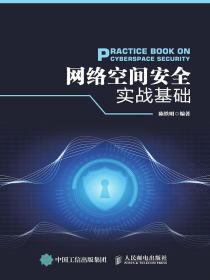内容简介
对齐性空间的研究使我们对微分几何和李群有了更深的了解。例如,在几何中一般性的定理和性质对于齐性空间也成立,并且在这个架构上通常更容易理解和证明。对于李群,相当多的分析或者开始于或者归结到齐性空间(通常是对称空间)上。多年来,对很多数学家来说,这本经典著作已经是、也会继续是这方面资料的标准来源。
《微分几何、李群和对称空间(影印版)》作者西于聚尔·黑尔加松首先对微分几何做了一个简洁、自足的介绍,然后细心处理了李群的理论基础,其陈述方式自1962年以来成为许多后续作者所采用的标准方式。这为引进和研究对称空间创造了条件,而这正是《微分几何、李群和对称空间(影印版)》的核心部分。
《微分几何、李群和对称空间(影印版)》的结尾则按照Victor Kac的方法,通过e上单李代数的Killing—Cartan分类和R上单李代数的Cartan分类,对对称空间进行了分类。
《微分几何、李群和对称空间(影印版)》每章后面都配有丰富且实用的习题,且书后附有全部问题的解答或提示。在这一版中,作者做了一些修正,并添加了一些有益的注记和有用的参考文献。
Sigurdur Helgason因《微分几何、李群和对称空间(影印版)》和Groups and Geometric Analysis而获Steele奖。
章节目录
PREFACE
PREFACE To THE 2001 PRINTING
SUGGESTIONS To THE READER
SEQUEL To THE PRESENT VOLUME
GROUPS AND GEOMETRIC ANAI VSIS CONTENTS
GEOMETRIC ANALYSIS ON SYMMETRIC SPACES CONTENTs
CHAPTER IElementary Differential Geometry
1.Manifolds
2.Tensor Fields
1.Vector Fields and 1- Forms
2.Tensor Algebra
3.The Grassman Algebra
4.Exterior Differentiation
3.Mappings
1.The Interpretation of the Jacobian
2.Transformation of Vector Fields
3.Effect on Differential Forms
4.Afine Connections
5.Parallelism
6.The Exponential Mapping
7.Covariant Diferentiation
8.The Structural Equations
9.The Riemannian Connection
10.Complete Riemannian Manifolds
11.Isometries
12.Sectional Curvature
13.Riemannian Manifolds of Negative Curvature
14.Totally Geodesic Submanifolds
15.Appendix
1.Topology
2.Mappings of Constant RankExercises and Further ResultsNotes
CHAPTER IILie Groups and Lie Algebras
1.The Exponential Mapping
1.The Lie Algebra of a Lie Group
2.The Universal Enceloping Algebra
3.Left Inuariant Affine Commectins
4.Taylor's Formula and the Differential of the Expomential Mapping J
2.Lie Subgroups and Subalgebras
3.Lie Tranfomation Groups
4.Coset Spaces and Homogeneous Spaces
5.The Adjoint Group
6.Semisimple Lie Groups Forms
7.Invariant Diferential Forms
8.Perspectives
Exercises and Further Results
Notes
CHAPTER IIIStructure of Semisimple Lie Algebras
1.Preliminaries
2.Theorems of Lie and Engel
3.Cartan Subalgebras
4.Root Space Decomposition
5.Significance of the Root Pattern
6.Real Forms
7.Cartan Decompositions
8.Examples.The Complex Classical Lie Algebras
Exercises and Further Results
Notes
CHAPTER IVSymmetric Spaces
1.Affine Locally Symmetric Spaces
2.Groups of Isometries
3.Riemannian Globally Symmetric Spaces
4.The Exponential Mapping and the Curvature
5.Locally and Globally Symmetric Spaces
6.Compact Lie Groups
7.Totally Geodesic Submanifolds.Lie Triple Systems
Exercises and Further Results
Notes
CHAPTER VDecomposition of Symmetric Spaces
1.Orthogonal Symmetric Lie Algebras
2.The Duality
3.Sectional Curvature of Symmetric Spaces
4.Symmetric Spaces with Semisimple Groups of Isometries
5.Notational Conventions
6.Rank of Symmetric Spaces
Exercises and Further Results
Notes
CHAPTER VISymmetric Spaces of the Noncompact Type
1.Decomposition of a Semisimple Lie Group
2.Maximal Compact Subgroups and Their Conjugacy
3.The Iwasawa Decomposition
4.Nilpotent Lie Groups
5.Global Decompositions
6.The Complex Case
Exercises and Further Results
Notes
CHAPTER VIISymmetric Spaces of the Compact Type
1.The Contrast between the Compact Type and the Noncompact Type
2.The Weyl Group and the Restricted Roots
3.Conjugate Points.Singular Points.The Diagram
4.Applications to Compact Groups
5.Control over the Singular Set
6.The Fundamental Group and the Center
7.The Aiffne Weyl Group
8.Application to the Symmetric Space U/K
9.Classification of Locally Isometric Spaces
10.Geometry of U/K.Symmetric Spaces of Rank One
11.Shortest Geodesics and Minimal Totally Geodesic Spheres
12.Appendix.Results from Dimension Theory
Exercises and Further Results
Notes
CHAPTER VIIIHermitian Symmetric Spaces
1.Almost Complex Manifolds
2.Complex Tensor Fields.The Ricci Curvature
3.Bounded Domains.The Kernel Function
4.Hermitian Symmetric Spaces of the Compact Type and the Noncompact Type
5.Irreducible Orthogonal Symmetric Lie Algebras
6.Irreducible Hermitian Symmetric Spaces
7.Bounded Symmetric Domains
Exercises and Further Results
Notes
CHAPTER IXStructure of Semisimple Lie Groups
1.Caftan, Iwasawa, and Bruhat Decompositions
2.The Rank-One Reduction
3.The SU(2, 1) Reduction
4.Cartan Subalgebras
5.Automorphisms
6.The Multiplicities
7.Jordan Decompositions
Exercises and Further Result
Notes
CHAPTER XThe Classification of Simple Lie Algebras and of Symmetric Spaces
1.Reduction of the Problem
2.The Classical Groups and Their Cartan Involutions
1.Some Matrix Groups and Their Lie Algebras
2.Connectivity Properties
3.The Involutive /lutomorphisms of the Classical Compact Lie Al&ebras
3.Root Systems
1.Generalities
2.Reduced Root Systems
3.Classification of Reduced Root Systems.Coxeter Graphs and Dynln'n
Diagrams
4.The Nonreduced Root Systems
5.The Highest Root
6.Outer Automorphirms and the Covering Index
4.The Classification of Simple Lie Algebras over C
5.Automorphisms of Finite Order of Semisimple Lie Algebras
6.The Classifications
1.The Simple Lie Algebras ever C and Their Compact Real Forms.The
Irreducible Riemannian Globally Symmetric Spaces of Type II and Type IV
2.The Real Forms of Simple Lie Algebras ~oer C.Irreducible Riemannian
Globally Symmetric Spaces of Type I and Type IF"
3.Irreducible Hermitian Symmetric Spaces
4.Coincidences between Different Classes.Special lsomorphisms
Exercises and Further Results
Notes
SOLUTIONS TO EXERCISES
SOME DETAILS
SUPPLEMENTARY NOTES
ERRATA
BIBLIOGRAPHY
LIST OF NOTATIONAL CONVENTIONS
SYMBOLS FREQUENTLY USED
INDEX
微分几何、李群和对称空间(影印版)是2018年由高等教育出版社出版,作者Sigurdur。
得书感谢您对《微分几何、李群和对称空间(影印版)》关注和支持,如本书内容有不良信息或侵权等情形的,请联系本网站。

















